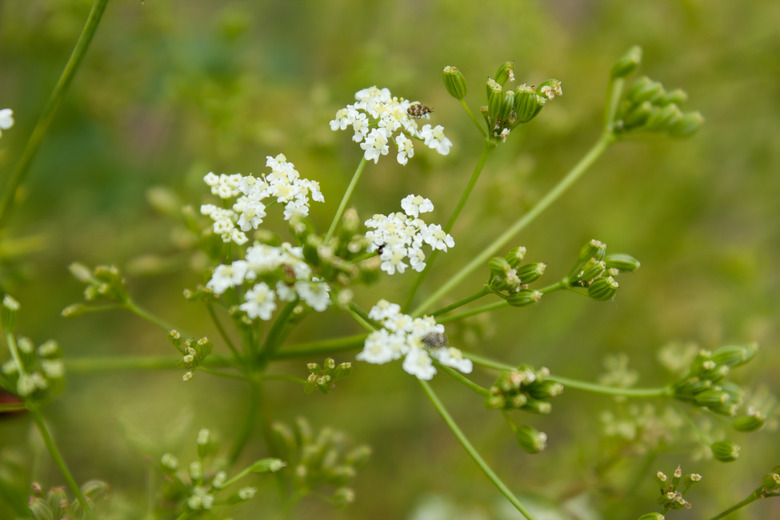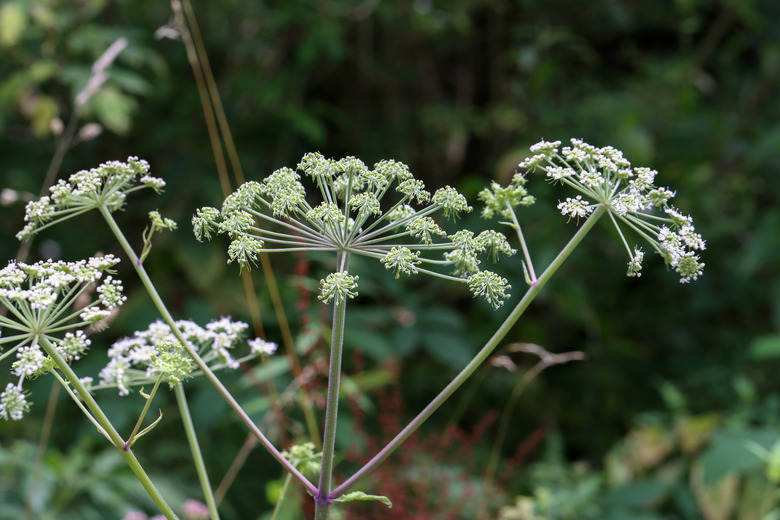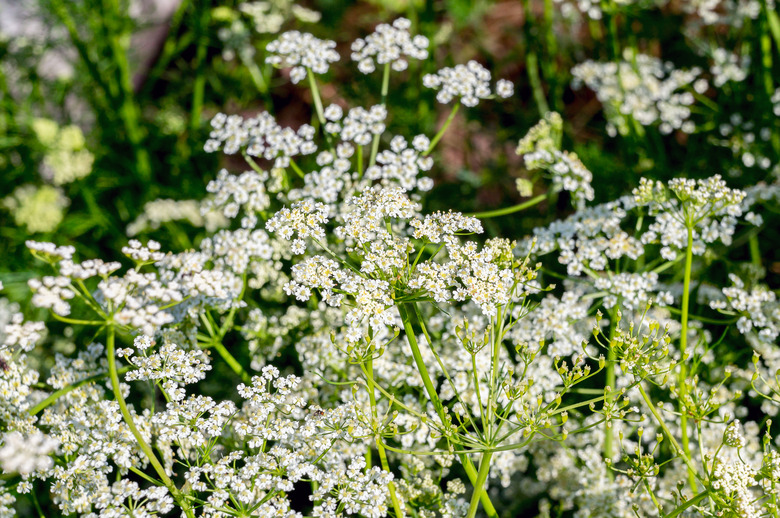How To Grow Caraway
The caraway plant (Carum carvi) is a hardy herb that is related to carrots. It is a biennial, growing foliage the first year and then flowering, fruiting and dying during the second growing season. The dainty, tiny flowers appear in umbels in late spring or early summer.
In the United States, caraway is generally grown for its fruits, often called caraway seeds, that impart a licorice taste and also for its edible roots that look like white carrots. Americans may be most familiar with the sharp, savory taste of caraway seeds from their use in rye bread. Extremely hardy and heat and cold tolerant, caraway plants grow in U.S. Department of Agriculture plant hardiness zones 3 through 11.
Best Uses for Caraway
Caraway is a biennial herb with edible foliage, roots and seeds. It is usually planted in the herb garden or vegetable garden, although it is somewhat ornamental. The first year, it produces a rosette of lacy, carrot-like foliage. It tops out at about 8 inches the first year. The second year, caraway grows larger, to 30 inches tall and 45 inches wide. The foliage is more feathery the second year, and the plant also produces tiny pink or white flowers on umbels with flattened tops. This definitely qualifies caraway for the cottage garden and maybe even a filler herb for adding interesting foliage in the flower garden. The flowers attract beneficial bugs.
Most gardeners who plant caraway do so for the seeds or roots. The thin, crescent-shaped seeds are used to flavor foods like soup, bread, cake, biscuits, apple pie and cheese. They impart an earthy, licorice taste with a hint of citrus and pepper. The edible roots of the plant look somewhat like a parsnip but smaller.
Caraway is also used for medicinal purposes by some people who grow it. It is reputed to benefit the digestive system if you make a tea from the seeds or even just chew them. This is said to help digestion, increase appetite, relieve gas and freshen breath.
Long ago, it was believed that caraway held certain remarkable and unusual properties. The superstition was that caraway conferred the gift of retention. This gift was said to prevent thieves from stealing any object that held or contained caraway seeds. Supposedly, the caraway gift also resulted in thieves being unable to leave the house they were attempting to rob until taken into custody.
How to Grow Caraway
-
Common Name: Caraway
-
Botanical Name: Carum carvi
-
When to Plant: Wait until after the last frost in spring or plant in fall in mild-winter regions
-
USDA Zones: Grow as an biennial in zones 3-11
-
Sun Exposure: Plant caraway in a sunny, open spot in cooler climates and with afternoon shade in warmer zones
-
Soil Type: Moist, well-draining soil with some organic content
-
When it's in Trouble: Dies as a seedling if it doesn't get enough water but loses its leaf color if overwatered or if planted on soil with poor drainage
-
When it's Thriving: Produces a large mound of lush, feathery leaves and flowers in umbels
Starting Caraway From Seed
Sow caraway seeds in a weeded and worked garden bed that gets full sun. The soil should be well-draining loam with pH ranges of 6.5 to 7.0. Sow the small, hard seeds 1/2 inch deep and 8 to 12 inches apart in rows that are 18 to 24 inches apart. Germination is slow and inconsistent, so put in several seeds for every plant you hope to grow.
Keep the soil moist from seed sowing through germination. After the seeds sprout, continue to keep the soil moist. Caraway is an herb that requires very little cultivation effort on the part of the gardener. However, adequate irrigation is essential. Use a soaker or drip system if available since it's important to keep the foliage dry.
When the seedlings grow to 4 inches tall, thin them to 8 to 12 inches apart. If you sow in fall, cover the seeded area with organic mulch in cooler areas. Put in a second crop a year after the first in order to avoid gaps in production. The plants self-seed very effectively, so you may have additional crops without sowing more seeds.
Experts do not recommend starting caraway from starts from the garden store. Caraway plants quickly develop long, carrot-like taproots, and once this happens, it is very difficult to transplant them successfully. For that reason, you are not likely to find caraway seedlings in stores or even online. If you decide to sprout your own seedlings indoors, use biodegradable pots that can be put right into the garden bed and transplant as soon as you can.
In What Zone Does Caraway Grow Best?
Caraway plants are surprisingly hardy and can grow as a biennial in U.S. Department of Agriculture plant hardiness zones 3 through 11. However, the plants are native to mild-to-warm areas in Europe and western Asia, where they thrive in full sun and well-drained soil with pH ranges of 6.5 to 7.0. They are likely to grow best in similar U.S. climates.
When Should You Plant Caraway?
You can plant caraway in the garden in spring or fall. If you plant in spring, wait until the last spring frost has passed. The plants will grow all summer and then die back to regrow their foliage the following spring. You can give the plants a head start by starting seeds indoors a few weeks before you plan to move them into the garden.
In fall, plant well before the first frost and use organic mulch before the cold sets in. You can also plant in early winter if your area has a temperate winter climate. If you sow caraway in the fall or winter, it will yield early spring plants.
Soil, Sunlight and Water Recommendations for Caraway
Like most herbs, caraway grows in ordinary soil as long as it is well-draining. The best pH for caraway soil is slightly acidic or neutral, between 6.0 and 7.0. Caraway grows best in full sun. You should plant it in a location with partial afternoon shade if your summers are particularly long and hot.
Caraway isn't a demanding herb, but it does need water, especially in the first year when the plant is developing its long taproot. After seed sowing, you should never allow the soil to dry out. However, this changes during the plant's second year, when it's okay for caraway soil to dry slightly between waterings. During periods of drought, however, give the plants a good soak once a week. Be sure not to get the foliage wet as you water. You can do this by watering around the base of the plant or by using a soaker hose. Stop irrigation when the flowers begin to form to encourage seeds to mature rapidly.
How to Winterize Caraway
Caraway plants are both heat and cold tolerant and the foliage can survive winter temperatures above freezing. The foliage dies back in winter after the first frost, but regrows in the spring. You can help the plant make it through cold winters by using a thick layer of straw mulch or organic mulch over the area. Some gardeners like to cut plants back after the first growing season.
How to Harvest Caraway
Caraway offers many different options when it comes to parts to harvest. In fact, all parts of the plant can be harvested for use in the kitchen. If you are interested in eating the long, slender roots that taste peppery like parsnips, dig them up in the fall of the second year.
Fresh leaves can be used in salads, soups and stews or can be eaten alone like spinach. Harvest them as you need them. Use garden scissors and be careful not to rip the stalk as you remove the leaves. The flowers are also edible, but eating them will reduce your seed harvest.
The caraway seeds are ready to harvest when the seed heads change color at the end of the second season. When they turn from green to brown, cut off the seed heads and store them in a paper bag in a cool, dry, well-ventilated location. Rub off the seeds from the seed head manually. The seeds must be thoroughly dry before storing them.
Common Pests and Other Problems for Caraway
Be cautious of underwatering during germination. If you don't keep the soil moist during germination, the caraway seeds will not germinate.
Leafhoppers are sap-sucking insects. They will poke holes in the leaves to consume the sap and can damage the leaves extensively as they do so. They are also responsible for spreading certain diseases, like aster yellows virus, so remove all damaged leaves quickly to prevent the spread. Control the leafhoppers with neem oil spray. Although neem likely won't kill the leafhoppers, it will discourage them from feeding on the leaves.
You can't miss seeing parsley caterpillars on your green caraway foliage. They are a striking mix of green, yellow and black. The primary color is green, and the other colors show up in broad bands across the caterpillar's back. They enjoy eating the caraway foliage. Just pick them off by hand as you see them. If you want to dispose of them, drop them in soapy water.
Aphids are also sucking insects. They are green or black, but you may not be able to see the color since they are so small. They tend to congregate on the underside of leaves. When you see a group, get out the hose. A sharp stream of water will knock these bugs right off the foliage.
Caraway is a relative of the carrot plant, as evidenced by the caraway's carrot-like foliage and slender, edible root. The carrot rust fly attacks the carrot, but it will also go for caraway. The adult rust fly won't do any harm at all to your crop, but the larvae enjoy eating the root of the plant. In large commercial operations, they can take out a whole crop.
Suspect carrot rust fly larvae if your caraway plants are stunted or wilting. Dig the soil away from the base of the plant carefully to take a look at the root. If you see holes or larvae, your caraway is infected. To combat these pests, drench the soil around the plant with organic pyrethrum.
Common Diseases for Caraway
Caraway plants are not attacked by many diseases. One for which to watch, however, is the aster yellows virus. This virus, spread by leafhoppers, causes the flowers to be malformed and discolored. The best way to control aster yellows virus is to control your leafhopper population. Neem oil is the best way to keep leafhoppers at bay. There is no cure for viruses.


